Steven Pressfield's Blog, page 19
June 29, 2022
“You have to be a studio”
I was doing a free rewrite a few years ago on the lot at Paramount when a producer friend spotted me on the bungalow’s porch and plopped down in the chair beside me. She asked me what I was working on beside this freebie.
I hesitated.
“That can’t happen,” she said at once.
 The gate at Paramount studios
The gate at Paramount studios“What do you mean?”
“You not being ready when someone asks that question. You have to have a slate.”
“A slate?”
“Look around,” my friend said, indicating the soundstages and production offices that extended in every direction. “Every studio has a slate. Fox, Disney, Warners…they’ve all got a lineup of pictures they’re making and more in the pipeline. Every producer on this lot has a slate, and every producer and actor and director on every other lot has a slate. I have a slate. You have to have one too.”
My friend was a serious player. She had had hits at two different studios and was in production on another picture at a third.
“Think about who we’re competing against in this town. It’s not just other writers. We’re competing with studios. We have to have the same professional attitude they have—about finances, about contingencies, about material.
“You’re a writer. At all times you have to have at least three finished scripts and half a dozen in the works. In a meeting, when a producer says, ‘Steve, what else have you got?’ you have to be able to rattle off four, five, six projects—and be able to pitch ’em all with full professionalism.”
My friend was late for a meeting; she had to hurry off. But what she said as she left is still burned into my brain.
The post “You have to be a studio” first appeared on Steven Pressfield.“Just because we’re ‘creative’ doesn’t mean we have permission to act like idiots. The reason writers are condescended to in this town and treated like children is because they act like children. Those days are over. We are entrepreneurs. We are in business. We’re competing against multi-billion-dollar enterprises, and we have to be just as professional as they are.”
June 22, 2022
Working for the Man
Question: what will you and I do differently when we exit the ranks of the officially employed and set out on our own as artists or entrepreneurs?
Answer: We’ll do exactly what we did before, only instead of Mister Charley telling us what to do, we’ll tell ourselves.
Instead of the Man setting the agenda, we’ll set it.
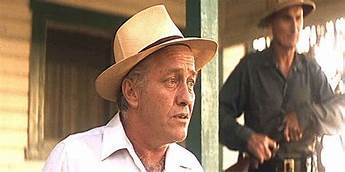 Strother Martin as “the Captain” in COOL HAND LUKE
Strother Martin as “the Captain” in COOL HAND LUKEWe decide what our goal is—and how we intend to reach it.
We decide how much we’re willing to sacrifice to reach that goal.
We decide how many hours we will work each day (our total, bank on it, will be much higher than it was when we worked at a mainstream job) and how many weeks and months we will labor per year.
We decide where we will work. We decide when. And with whom.
We decide what time we get up and what time we go to bed. We assign our own vacations and our own days off. (We also assign all-nighters and working weekends.)
We alone will be the arbiters of our success. We’ll set the terms ourselves. (They may be quite different from conventional measures of success.)
We’ll give ourselves a raise if we deserve it. And we’ll kick ourselves in the butt when we screw up.
We will be our own boss, our own mentor, our own cheerleader, and our own psychiatrist.
Can we make this mental shift? Can we flip that switch in our head? Can we go from working for the Man to being the Man?
If our goal is to be a writer or an artist or an entrepreneur, we can’t do it any other way.
The post Working for the Man first appeared on Steven Pressfield.June 15, 2022
The Code of the Entrepreneur
I’m borrowing (again) from my entrepreneurship guru, Dan Sullivan. Dan identifies a statement that every entrepreneur makes to him or herself—whether she does this consciously or not. It’s the entrepreneur’s code, the independent businessperson’s declaration of principle:
I will expect no remuneration until I have created value for someone else.
Let me repeat that:
I will expect no remuneration until I have created value for someone else.
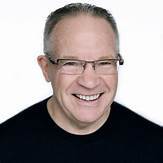 Dan Sullivan of Strategic Coach
Dan Sullivan of Strategic Coach“Create value” is a hard-boiled business term. There’s no art to it. No romance. But you and I as writers and dancers and actors and photographers live exactly by that dynamic—whether we realize it or not.
We write a book. It’s got to find readers. It’s got to sell. It has to “create value” for the person who lays out hard American greenbacks for the privilege of scanning through its pages. Otherwise, we’re not artists, we’re artistes. We’re living in a dream world.
We must remember always that art is a transaction. The viewer or reader or gallery-goer brings to the table something precious—her time and her attention. In return, you and I must deliver something—an image, a song, a story—worthy of our reader or viewer’s faith and expenditure.
Why do I cite this code? I do it to get our feet planted firmly on the ground. So that you and I as musicians and filmmakers and videogame designers can operate in the world as it really exists—and not in some “artistic” fantasy.
The post The Code of the Entrepreneur first appeared on Steven Pressfield.I will expect no remuneration until I have created value for someone else.
June 8, 2022
Going to the Gym in the Dark
It’s five in the morning and we’re on our way to the gym. This happens six days a week, rain or shine, Christmas, Fourth of July, your birthday. I hate it. Everybody does. We’d all rather be home in bed catching those lazybones Z’s. Why do it then? For me, it’s not because I imagine I’m going to be the next Mr. Universe.
It’s about the mental game.
 Mona Muresan at six in the morning, showing us how it’s done.
Mona Muresan at six in the morning, showing us how it’s done.Yes, the fitness and health aspects are important, even indispensable, to this ritual. But what this predawn expedition is really about for me is the Inner Game. I am preparing myself mentally and emotionally for the day’s work that will start for real in a couple of hours.
When you work out physically, you are doing four things that are superb rehearsals for creative work.
You’re doing something you don’t like.
You’re doing something that resists you.
You’re doing something that hurts.
You’re doing something you’re afraid of.
In the gym or on the track or the trail, we experience everyday moments of real physical fear. A weight we don’t think we can handle. A hill we’re not sure we can climb. Watch the faces of men and women at Gold’s or CrossFit or any other serious venue. See them going deep within, psyching themselves up to anticipate the level of effort and intensity they’re going to have to summon.
I’m not saying that Spartan-like physical training is the ticket for every artist or entrepreneur. You have to be a little crazy to sign up for this for any reason. But SOME form of self-discipline, some regimen that requires mental focus, some practice that involves visceral adversity can be a great way to kick-start the working day.
What you and I do as writers and dancers and actors and filmmakers is furious, serious stuff. You can’t do it coming straight off the couch. Can you run? Can you swim? Can you climb?
Do it.
That’s the artist’s way. That’s the mindset of the professional, the warrior, the independent operator.
The post Going to the Gym in the Dark first appeared on Steven Pressfield.June 1, 2022
The Muse tests us
The goddess tests you and me 24/7. She flies over and peers down on us. What she wants to see is that we are dedicated to the journey, to the process, that we are in it for the long haul and for keeps.
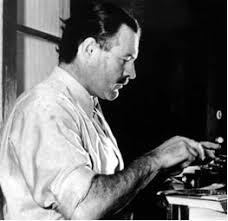 The Muse knows if we’ve been naughty or nice
The Muse knows if we’ve been naughty or niceWhat she doesn’t want to see is that we are attached to the real-world outcome of one specific project.
The Muse hates that because it shows that we have misapprehended the nature of her alliance with us and of our apprenticeship in her service.
“Keep working.”
The pro athlete who gets cut from his team, the ballerina who is let go by her dance company… both must go home and immediately begin training for their next job, even if they doubt they will ever find one.
The sent-down wide receiver must head over to the local college and recruit one of the young quarterbacks to work with him, alone and at night if necessary, throwing passes on the practice field, letting him run routes, helping him keep his technique sharp. The ballet dancer must sign up for class at once, continue her strength training, keep up her barre work.
For you and me, finishing Book #1 (or #21) means only plunging in immediately on #2 or #22.
We have to.
That’s the goddess’ law.
The post The Muse tests us first appeared on Steven Pressfield.“Keep working.”
May 25, 2022
Write the Big Moment Big
[In honor of The Godfather’s 50th anniversary, here’s one of my favorite Top Ten posts of the past.]
I have a friend who runs a very successful literary agency in Los Angeles. She represents screenwriters. I asked her once, “Is there any single mistake your writers make, not in business or marketing, but in the writing itself?”
She replied without hesitation,
“When they come to the Big Scene, they chicken out.”
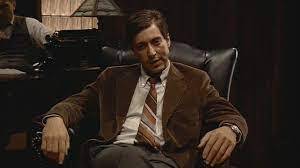 “Then I’ll kill them both.”
“Then I’ll kill them both.”I asked her to elaborate.
“Think about the ‘She’s my sister, she’s my daughter’ scene in Chinatown. Or the moment in The Godfather when Michael says, ‘If Clemenza can figure a way to have a weapon planted for me … then I’ll kill them both.” Those are Big Moments. Both are central to their dramas. And in each one, the writers and directors held nothing back. They didn’t under-write. They didn’t underplay. And both those moments are immortal.”

My friend said that her writers (and by extension, of course, all of us) tend to be risk-averse in their stories’ Big Moments.
“Partly I think it’s because they’ve been told that subtext is more powerful than text. Or they’re afraid that if they go balls-out for emotion and the moment doesn’t work, they’ll look foolish. So they deliberately under-write. They back off from having Carmela scream at Tony, ‘I was in love with Furio!’ Or from Tony slamming his fist through the wall two inches from Carmela’s face.”
My friend said she routinely has to force her writers to revisit their Big Moments and be brave enough to take the risk of really going for it.
I confess when I heard that, my blood ran a little cold.
I thought, “Am I doing that?”
And of course I am. And for the same reasons my friend cited.
The post Write the Big Moment Big first appeared on Steven Pressfield.Memo to self: Don’t chicken out next time. Write the Big Moment big.
May 18, 2022
Tom Guinzburg saves my life
When I first submitted my manuscript for Gates of Fire, it was eight hundred pages long. It was as big as a Manhattan phone book. My agent, Sterling Lord, told me flat out, “Steve, I can’t sell this. You have to cut three hundred pages.”
Three hundred pages?
I was paralyzed. This was only my second book. I had no idea how to delete almost half of it and have it still work. I was shell-shocked; I fell into depression and despair.
Then I got a note in the mail—a hand-written note on personal stationery. The note was from Tom Guinzburg, who was then the president of Viking Press, one of New York’s most prestigious publishing houses. Tom Guinzburg had been one of the founders of the Paris Review, along with George Plimpton and Peter Matthiessen. He was literary royalty, light-years above a novice like me.
It turned out that my agent Sterling had a weekly lunch with Tom and Larry Hughes of Wm. Morrow and other big guns of the New York publishing world. At Sterling’s request, Tom had read the manuscript of Gates of Fire. His note to me said, among other kind things, “There is a first-rate novel in here. I am confident you will pull this off.”
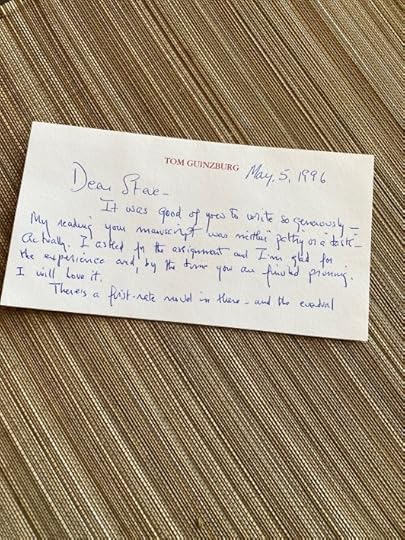 When we commit, the universe responds
When we commit, the universe respondsI can’t tell you how much that note meant to me. Tom Guinzburg barely knew me. There was no profit in it for him to reach out. He did it because he was a good guy with a generous heart.
That note changed my life. I taped it to the screen of my eight-bit Kaypro and took courage from it every day of the six months it took me to get three hundred pages out of that manuscript.
When you and I put our ass where our heart wants to be, the universe responds. We change. We see ourselves differently. But others, sometimes those we are not aware of (and whom we have no idea are aware of us), see us differently too. They may come to our aid in ways we could never have predicted and by some word or act of kindness change everything.
The post Tom Guinzburg saves my life first appeared on Steven Pressfield.May 11, 2022
The Universe Responds
It is not an idle or airy-fairy proposition to declare that the universe responds to the hero or heroine who takes action and commits, i.e. you and me when we plunge in, wholeheartedly, to a new creative venture.
 Nobel Prize winner Toni Morrison. Fortune DOES favor the bold.
Nobel Prize winner Toni Morrison. Fortune DOES favor the bold.The universe responds positively.
It comes to the hero’s aid.
Why does the universe respond?
The Sphere of Potentiality—i.e., the dimension above the Material Plane—recognizes the alteration in our hero. She has changed. She is not the same person she was, even ten seconds earlier.
She has, by an act of will and love and daring, stepped out of the role of the passive and the self-paralyzed and into the role of the active protagonist— the hero. She has in fact become a hero, quaking knees notwithstanding.
The universe comes to the hero’s aid.
The post The Universe Responds first appeared on Steven Pressfield.May 4, 2022
The Known and the Unknown
When we set out to write a book or a movie—or when we embark upon any innovative venture—we’re taking a step that has terrified the human race since our days back in the cave.
 This isn’t Nordkapp but it’s close
This isn’t Nordkapp but it’s closeWhy is creative commitment so scary? Because when we commit, we’re moving from the Known to the Unknown.
The definition of dream is that which exists only in our imagination. In other words, in the Unknown.
When we say, “Put your ass where your heart wants to be,” we’re proposing a mindset that is designed to outfox Fear of the Unknown. It says:
Don’t try to overcome your fear. Fear cannot be overcome. Instead simply move your will and your intention into the arena you fear… and see what happens.
When we sprint barefoot across the arctic ice and dive head-first into the frigid waters off Nordkapp, Norway, (yes, it’s a real place) we have literally flung our goose-bumped, Speedo-clad flesh into the Unknown.
Inspiring, ain’t it?
The post The Known and the Unknown first appeared on Steven Pressfield.April 27, 2022
Seb rescues Mia
Continuing our series on “Put your ass where your heart wants to be” …
 Emma Stone and Ryan Gosling in Damien Chazelle’s “La La Land”
Emma Stone and Ryan Gosling in Damien Chazelle’s “La La Land”There’s a great sequence in the movie La La Land, written and directed by Damien Chazelle. The heroine Mia, played by Emma Stone, is shattered by the catastrophic failure of her one-woman show.
MIA
I’m going home.
SEB
I’ll drive you.
MIA
No. Home.
Mia abandons her Hollywood dream and returns to her parents’ house in Boulder City, Nevada. But Seb (Ryan Gosling) loves her and believes in her. When a possible break for Mia materializes, Seb drives to Boulder City, finds Mia’s house (she had only told him it was “across from the library”) and retrieves her by main force.
In the wonderful climax to this sequence, Seb pulls up in front of Mia’s parents’ house in his ’73 Chevelle convertible, super-early to get a head start on the drive back to LA. But Mia is not there. The house is dark. Seb has told Mia he will stop out front and if she’s not waiting, he’ll leave without her. He puts the Chevy into gear. In the audience, our hearts are sinking…
Suddenly Mia appears, hurrying, on foot, on the sidewalk. She carries a couple of take-out cups.
MIA
I just went to get us some coffees.
Sometimes it takes another person to believe in us. For Mia, it’s Seb. In tick, tick…BOOM!, that person for (the real life) composer Jonathan Larson is Stephen Sondheim.
The point is: That person seized our ass and dragged it back to where our heart wanted to be.
The post Seb rescues Mia first appeared on Steven Pressfield.


